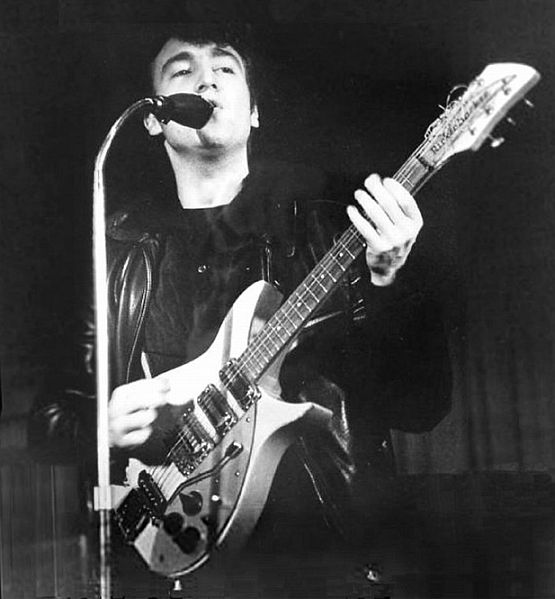

John fell in love with the instrument and confirmed this a few years later: “The Rickenbacker is the most beautiful guitar – the action (the amount of pressure required to push on the strings) is ridiculously low!” It would be the guitar the world would see John play exclusively over the next four years, just when the Beatles were propelled to world fame. We can see John holding the Rickenbacker in Astrid Kirchherr’s famous fairground photos of the band in November of that year. It was his first American-made guitar, although he initially believed he was playing a German-made guitar due to its name (he had been playing the Hofner Club 40, which John dubbed, “Club Footie”).

This change not only assured a special sound from the instrument, (soon known for its unique bright jangle and chime sounds) but also gave the “Rick” the distinctive and attractive look we know today.Ī freak chance of pop magic happened when 20-year-old John Lennon acquired the Rickenbacker 325 on credit payments at a Hamburg, Germany music store in 1960. The final touch would come in 1956 when Rickenbacker would abandon making steel-based bodies altogether and introduced a wooden “neck-through-body construction.” That is one single piece of wood from the neck across the central body selection. A unique feature of this model was the world’s firsthand-operated vibrato (the forerunner to today’s Whammy Bar), along with the fingerboard joined to the body at the 17th fret, allowing much greater access to the higher notes. They eventually created the “Electro Spanish Model B” in 1931. Perhaps this is why Rickenbacker and his partners began to experiment with wood-bodied Spanish guitars and solid-body designs. Related: “Has Technology Killed the Guitar?” At this point, it was not a pretty instrument. Rickenbacker guitars were the first known steel-based solid-body electric guitars in the world, using single pickups with two magnetized covers shaped like a house shoe.

Their early aluminum and steel-based instruments were nicknamed “Frying-pans” because of their long necks and small circular bodies. Intending to produce “electric Hawaiian guitars,” by 1931, they were producing 50 units a day. He eventually changed his surname spelling to the more American Rickenbacker, and by 1927, he and two partners founded the Rickenbacker Manufacturing Company. Swiss engineer Adolph Rickenbacker emigrated to the United States with his family and settled in Los Angeles in 1918. It was a fluke that got this guitar to that lofty level - with some love from a Beatle. Not just another brand, the Rickenbacker was the sound of a generation. The Gibson Les Paul model was for the heavy stuff, and the Fender gave the blues and country folks the right amount of twang. We all know that guitars dominated the 60’s and 70’s sound.


 0 kommentar(er)
0 kommentar(er)
